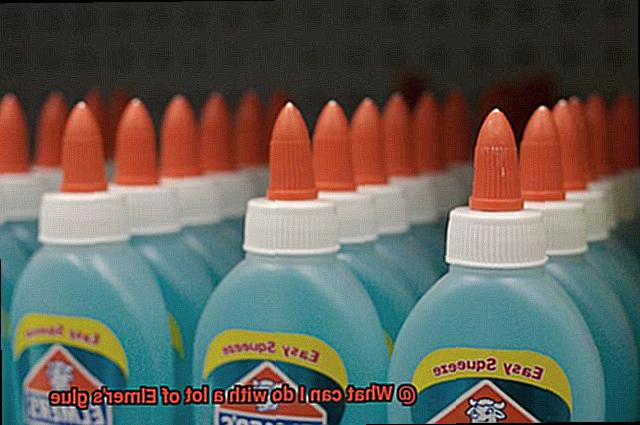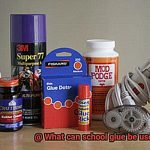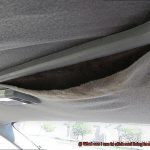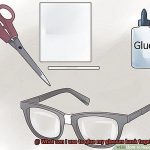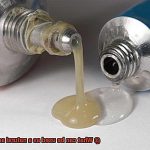Do you ever find yourself standing in front of a mountain of Elmer’s glue bottles, wondering what in the world you can do with all of them? Well, my friend, you’re about to discover the incredible potential hiding within that sticky, gooey goodness. Whether you’re a craft fanatic searching for new projects or a DIY enthusiast in need of some quick fixes around the house, Elmer’s glue is about to become your new best friend.
From creating jaw-dropping artwork to fixing broken bits and bobs, there’s almost no limit to what you can achieve with this trusty adhesive. So buckle up and get ready to embark on an adventure filled with endless possibilities – because today we’re going to explore all the amazing things you can do with a whole lot of Elmer’s glue.
Let’s start off with something fun and decorative – how about making your own dazzling glass gem magnets? All you need are some colorful glass gems and a healthy dose of Elmer’s glue. Simply stick those gems onto small magnets using the glue, and voila. You’ve got yourself a vibrant way to display photos, notes, and reminders on your fridge. It’s like turning your kitchen into a mini art gallery.
But wait, there’s more. If you happen to be a teacher looking for an exciting science experiment for your students, look no further than homemade slime. And guess what? Elmer’s glue is one of the essential ingredients needed to create this squishy delight.
Not only will it keep the kids entertained for hours (and let’s be honest, probably even yourself), but it’ll also teach them about polymers and spark their curiosity about chemistry. Talk about learning while having a blast.
These are just a taste of the incredible things you can do with a lot of Elmer’s glue.
So, if you’re ready to unleash your creativity and dive headfirst into this sticky wonderland, join me as we explore all the fun and practical uses for Elmer’s glue. Trust me, you won’t be disappointed.
Art Projects with Elmer’s Glue
Contents
Elmer’s glue, a beloved staple in many households, is not just for sticking things together. Its versatility makes it an excellent adhesive for a wide range of art projects. In this article, we will delve into the creative possibilities of Elmer’s glue and explore how it can be used to enhance your artistic endeavors.
Adding Texture and Dimension:
Mixing Elmer’s glue with materials like sand or salt allows you to create fascinating textures on your artwork. Apply the mixture onto your canvas or paper to achieve a gritty or grainy surface that adds depth and interest to your piece.
Faux Stained Glass Vibrancy:
Achieve the beauty of stained glass without the hassle. Mix Elmer’s glue with food coloring or acrylic paint to create colorful designs on transparent surfaces like glass or plastic.
Sensory Delight: Slime Creation:
Concoct your very own stretchy and squishy slime using Elmer’s glue mixed with borax or liquid starch. This fun project is enjoyed by both kids and adults, offering hours of entertainment.
Watercolor Magic: Resist Medium:
For watercolor enthusiasts, Elmer’s glue serves as a resist medium. Apply it to specific areas on your watercolor paper before painting, and watch as those areas resist the paint, resulting in unique and beautiful effects.
Personalized Flair: DIY Stickers:
Create personalized stickers with ease using Elmer’s glue. Draw or print designs onto wax paper or parchment paper, apply a layer of glue over them, let it dry, peel off the sticker, and use it to adorn belongings or add flair to art projects.
Revitalizing Objects: Decoupage Delights:
Breathe new life into old objects with Elmer’s glue. Apply a layer of glue between layers of paper or fabric to create a durable and decorative finish on wood or ceramics. It’s a fantastic way to transform and repurpose your belongings.
Household Repairs with Elmer’s Glue
Elmer’s Glue is not just for crafting; it can also be a handy tool for household repairs. This versatile adhesive works wonders when it comes to fixing small cracks or breaks in items made of plastic, ceramic, or glass. So before you toss out that favorite mug or decorative vase, why not give Elmer’s glue a try?
Let’s start with ceramics and pottery. We’ve all experienced the heartbreak of a beloved item shattering into pieces. But fear not, because Elmer’s glue can help put those pieces back together.
First, make sure to clean the broken surfaces thoroughly. Then, apply a thin layer of glue and carefully press the pieces together. Allow it to dry completely before using or displaying the repaired item. You’ll be amazed at how seamlessly Elmer’s glue can restore the beauty and functionality of your cherished ceramics.
Now, let’s move on to plastic repairs. From toys to household gadgets, many plastic items can benefit from a little bit of Elmer’s glue magic. Simply apply a small amount of glue along the crack and firmly press it together.
Wipe away any excess glue and let it dry completely before using the item again. This technique can extend the lifespan of many plastic items and save you money on replacements. Whether it’s a broken toy or a cracked phone case, Elmer’s glue can make them look and function like new.
Glass items aren’t exempt from Elmer’s glue repairs either. Picture frames, decorative glassware – they can all be salvaged with a little bit of patience and glue. Apply a thin layer of glue to the broken edges and carefully press them together.
Hold the pieces in place for a few minutes until the glue sets. Just be careful not to apply too much pressure as it may cause further damage. Once dry, you can handle or hang up your repaired item with confidence, knowing that Elmer’s glue has restored its beauty and integrity.
But Elmer’s glue isn’t just for fixing objects; it can also be used for minor home repairs. For example, if you have a loose screw that keeps falling out of a hole in your wood furniture, try applying some Elmer’s glue to the screw threads before reinserting it. This will provide extra grip and stability, saving you from a wobbly table or chair. Elmer’s glue is a reliable solution for these small fixes that seem to pop up all too often.
It’s important to note that while Elmer’s glue is a reliable and cost-effective solution for many everyday household repairs, it’s not suitable for all types of repairs. Heavy loads or exposure to water may require specialized adhesives or the help of a professional.
But for those small fixes that seem to always catch us off guard, keep a bottle of Elmer’s glue on hand and unleash its magical powers.
DIY Home Decoration with Elmer’s Glue
This versatile adhesive is not just for sticking things together; it can also be the secret ingredient for creating stunning DIY home decorations that will impress your friends and family. Let’s explore some exciting ideas on how to use Elmer’s glue to transform your living space.
Personalized Photo Frames:
Turn ordinary wooden frames into personalized masterpieces. Apply a thin layer of Elmer’s glue to the frame, press your favorite photos onto it, and let it dry. The glue will securely hold the photos in place, creating custom frames that showcase your cherished memories in style. You can even experiment with different textures, such as glitter or fabric, to add an extra touch of elegance.
Rustic Vases and Candle Holders:
Give new life to empty glass containers by creating rustic vases or candle holders. Apply glue all over the surface and wrap it with twine, ribbon, or yarn. The glue will dry clear, allowing the textured material to shine through. These handmade pieces will add a touch of warmth and charm to any room, creating a cozy and inviting atmosphere.
Textured Wall Art:
Unleash your inner artist by creating unique collages using fabric scraps, paper cutouts, or dried flowers. Apply glue to a canvas or wooden board, arrange your chosen materials on top, and seal them with another layer of glue. The result is textured wall art that reflects your personal style and adds visual interest to your walls.
Custom Homemade Paint:
Inject vibrant colors into your home decor by mixing Elmer’s glue with water and acrylic paint. This homemade paint can be used on various surfaces such as wood, canvas, or glass. Let your imagination run wild as you experiment with custom colors and textures to create one-of-a-kind artwork or add a pop of color to furniture or accessories.
Faux Stained Glass Windows:
Bring the beauty of stained glass into your home without breaking the bank. Draw a design on clear plastic or acetate sheet, trace it with Elmer’s glue to create raised lines, and fill in the spaces with transparent glass paint. The result is stunning faux stained glass windows that can be displayed in your windows or used as eye-catching wall art.
Gardening Uses for Elmer’s Glue
Prepare to be amazed by the surprising gardening uses of this humble adhesive. Beyond its traditional role in arts and crafts, Elmer’s glue can revolutionize your gardening game in ways you never imagined.
Let’s start with the magic of seed starting. We’ve all experienced the frustration of sowing delicate seeds, only to have them displaced by a clumsy watering can. But fear not. Elmer’s glue is here to save the day.
With this crafty adhesive, you can create homemade seed tapes that keep your seeds in place, no matter how vigorous your watering routine. Simply apply a thin layer of glue onto strips of newspaper or tissue paper, place your seeds at regular intervals, and watch as they stay put, defying gravity and ensuring perfect spacing.
But wait, there’s more. Elmer’s glue is not just a seed starting savior; it’s also a superstar when it comes to plant propagation. Mix a little glue with water, and you’ve got yourself a rooting hormone gel that works wonders for rooting cuttings.
Apply this magical concoction to the freshly cut ends of plant stems or leaf cuttings, and witness how it seals the wounds, prevents moisture loss, and stimulates root development. It’s like giving your plants a luxurious spa treatment, encouraging healthy growth and propagation.
Now let’s turn our attention to pest control. Every gardener knows the constant battle against pesky insects that can wreak havoc on our precious plants. Enter Elmer’s glue, the sticky superhero that traps and immobilizes unwanted pests. Mix it with water to create a sticky solution that acts as an insect trap for aphids, whiteflies, mealybugs, and other garden nuisances. Simply spray this adhesive concoction onto your plants, and watch as it ensnares those unwanted visitors, preventing them from infesting your greens.
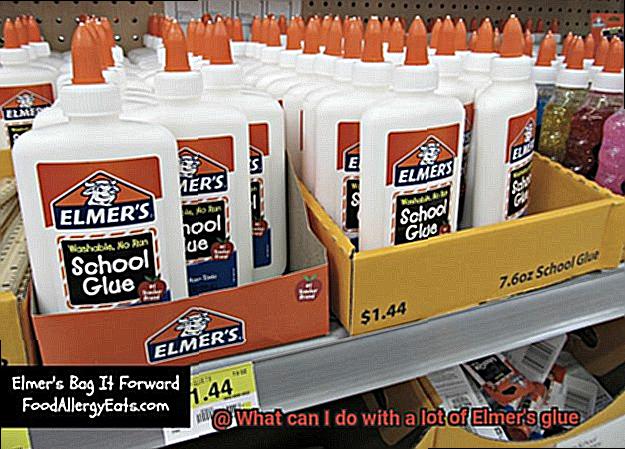
But wait, there’s more (again). Elmer’s glue has yet another surprising gardening use – plant first aid. If your plant suffers a cut or scrape, don’t fret. Simply grab your trusty Elmer’s glue and apply a thin layer over the wound. This creates a protective barrier that keeps harmful pathogens at bay and promotes faster healing. Think of it as a soothing balm for your wounded plants, providing them with the care they need to recover and thrive.
Now, before you rush off to raid your craft drawer, a word of caution. Make sure to use non-toxic and washable versions of Elmer’s glue in your gardening endeavors. We want to protect our beloved plants and maintain a healthy soil ecosystem. Additionally, always test the glue on a small area before applying it extensively to ensure compatibility and avoid any unpleasant surprises.
Donating Excess Elmer’s Glue
Are you drowning in a sea of Elmer’s glue? I have the perfect solution – donate it. By donating your excess Elmer’s glue, you can create a positive impact in your community and help others unleash their creative potential. Let’s dive into the benefits of donating and explore the various ways you can spread the joy of crafting with glue.
Local Schools and Educational Institutions:
Teachers are unsung heroes who often dig into their own pockets to provide classroom supplies. By donating your Elmer’s glue to local schools or educational institutions, you can alleviate some of that burden and support their art programs. Reach out to nearby schools or school districts and inquire about their acceptance of art supply donations. Your contribution will empower students to explore their imaginations and create masterpieces.
Community Centers and After-School Programs:
Community centers and after-school programs provide a nurturing environment for both children and adults to delve into their artistic talents. These creative hubs are always in need of art supplies, including glue, to ensure the success of their programs.
Take a leap and contact community centers or after-school programs in your area. In doing so, you’ll be enabling aspiring artists to bring their visions to life.
Non-Profit Organizations Focused on Arts Education:
If you’re looking to make an even greater impact, consider donating your excess Elmer’s glue to non-profit organizations that focus on arts education or provide art programs for underserved communities.
These organizations often have a substantial need for supplies and rely on donations to keep their programs running smoothly. Research local non-profits aligned with your values and reach out to see if they accept glue donations. Your generosity will help bridge the opportunity gap and bring the transformative power of art to those who need it most.
Charities and Initiatives Collecting Art Supplies:
Keep your eyes peeled for specific charities or initiatives that run donation drives or have designated drop-off points for art supplies. These initiatives strive to provide much-needed resources to schools or communities in need.
Harness the power of the internet and search for such initiatives in your area. Follow their guidelines and contribute your excess Elmer’s glue, knowing that you’re making a tangible difference in the lives of aspiring artists.
Before donating, remember to inspect the condition of your glue. If it’s expired or dried out, it may not be suitable for art projects. However, if it’s in good condition, package it neatly and securely before donating.

Your thoughtfulness will ensure that others can enjoy the full potential of your donated glue.
Safety Tips for Using Elmer’s Glue
When it comes to crafting and creating, Elmer’s glue is a versatile and popular adhesive. Whether you’re working on art projects, repairs, or DIY creations, Elmer’s glue can be your trusted companion.
However, it’s important to remember that safety should always be a top priority. In this essay, we will explore some essential safety tips for using Elmer’s glue to ensure a safe and enjoyable crafting experience.
Read and Follow Instructions:
Before you start using Elmer’s glue, take a moment to read and follow the instructions provided on the packaging.
These instructions will guide you on how to properly apply the glue, how long it takes to dry, and any specific precautions or warnings you need to be aware of. By following the instructions, you can ensure that you are using the glue correctly and safely.
Keep Out of Reach:
Elmer’s glue may be non-toxic, but it should still be kept out of reach of young children and pets. While it won’t cause serious harm if ingested in small amounts, swallowing large quantities can lead to discomfort or digestive issues. Additionally, it can pose a choking hazard. To prevent any accidents, make sure to store the glue in a secure place where children and pets cannot access it.
Work in a Well-Ventilated Area:
To avoid inhaling any fumes emitted by the glue, make sure to work in a well-ventilated area. Elmer’s glue contains chemicals that may emit fumes, which can be irritating to the respiratory system. Open windows or use a fan to help dissipate any fumes that may be present. This will ensure that you are working in a safe environment.
Protect Surfaces and Clothing:
To prevent accidental spills or leaks, lay down a protective surface such as a plastic tablecloth or newspaper before using Elmer’s glue. This will not only make cleanup easier but also protect your working area from potential damage. Additionally, consider wearing old clothing or an apron to protect your regular attire from any potential stains or damage.
Avoid Skin and Eye Contact:
While Elmer’s glue is generally safe for the skin, it’s best to avoid direct contact. If accidental contact occurs, wash the affected area immediately with soap and water. If irritation persists, seek medical attention. Be especially cautious when working near the eyes and avoid getting glue in them. If glue does come into contact with the eyes, rinse them with water for several minutes and seek immediate medical attention if necessary.
Conclusion
If you find yourself with an abundance of Elmer’s glue, fear not. There are countless creative and practical ways to put that sticky substance to good use. From arts and crafts projects to household repairs, your surplus of glue can be transformed into something extraordinary.
Let your imagination run wild as you explore the world of DIY crafts. Create colorful slime by mixing glue with a few drops of food coloring and liquid starch. Mold it into fun shapes or add glitter for an extra touch of sparkle. Or why not try your hand at making homemade playdough? Combine glue, flour, water, and oil to create a pliable dough that will provide hours of entertainment for children and adults alike.
If you’re more inclined towards home improvement, Elmer’s glue can be a handy tool in your arsenal. Use it to repair broken ceramics or fix loose tiles. Its strong adhesive properties make it perfect for securing loose ends on carpets or rugs. You can even use it as a temporary solution for sealing small cracks in walls before applying proper plaster.
But the uses don’t stop there. Elmer’s glue is also great for creating unique textures in artwork. Apply it generously onto canvas or paper and let it dry to create raised patterns that add depth and interest to your paintings or collages.
In conclusion, having an excess of Elmer’s glue opens up a world of possibilities. Whether you’re unleashing your creativity through crafts or tackling household repairs, this versatile adhesive is sure to come in handy.

